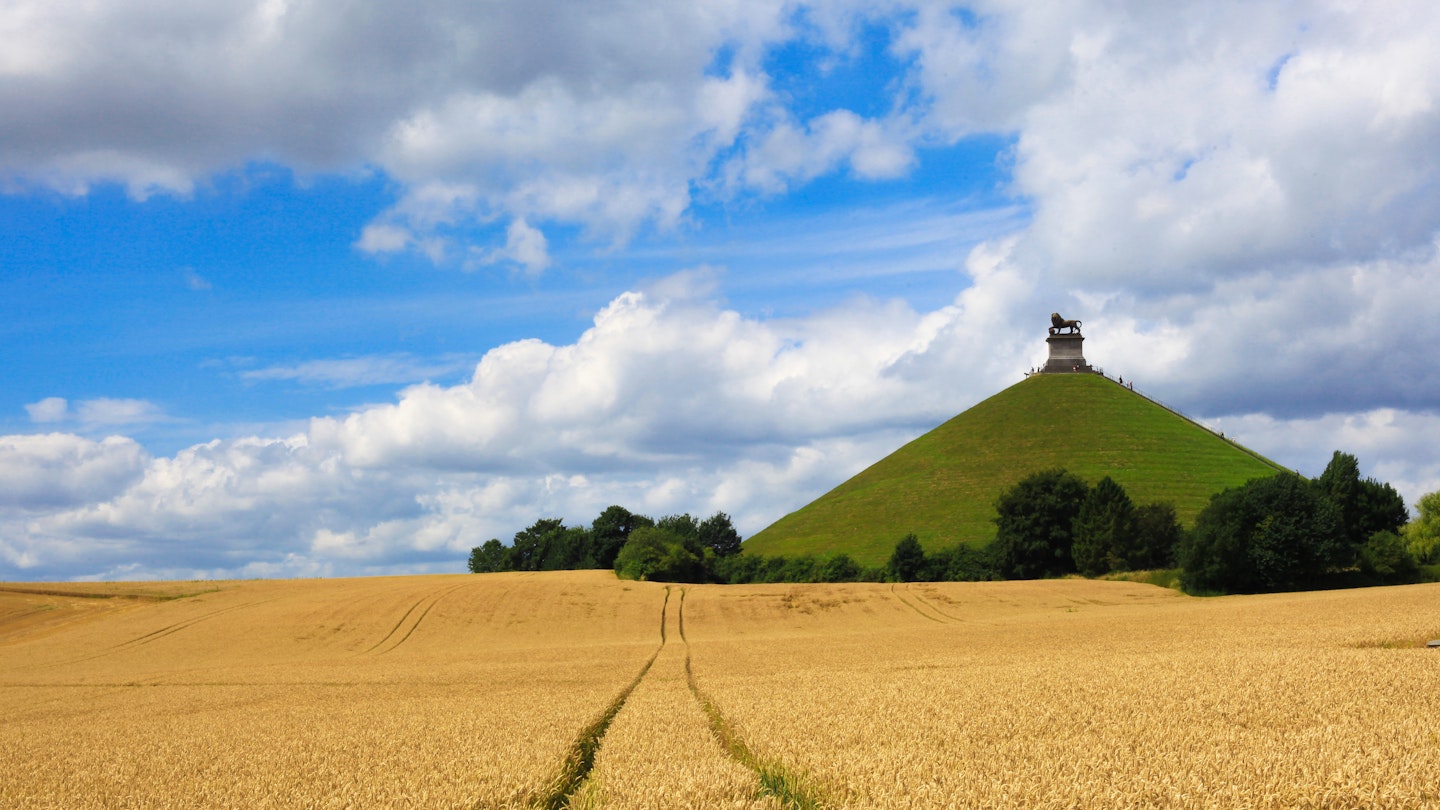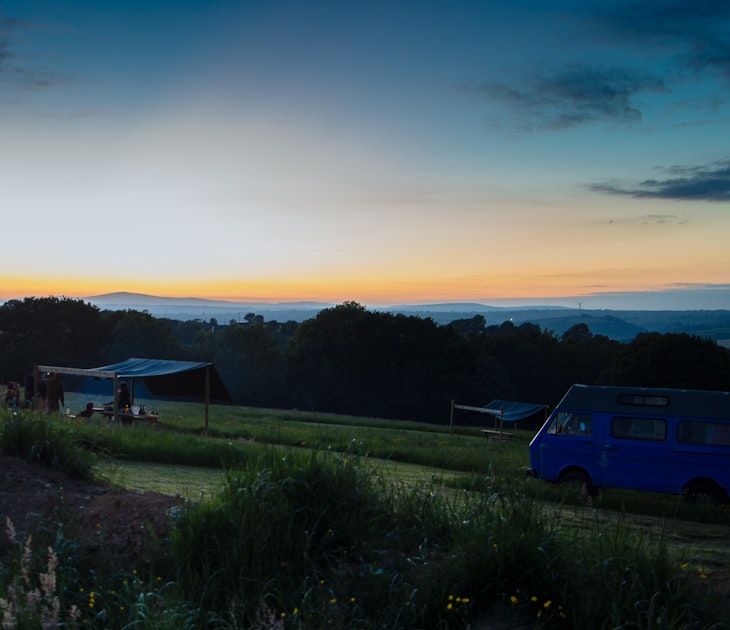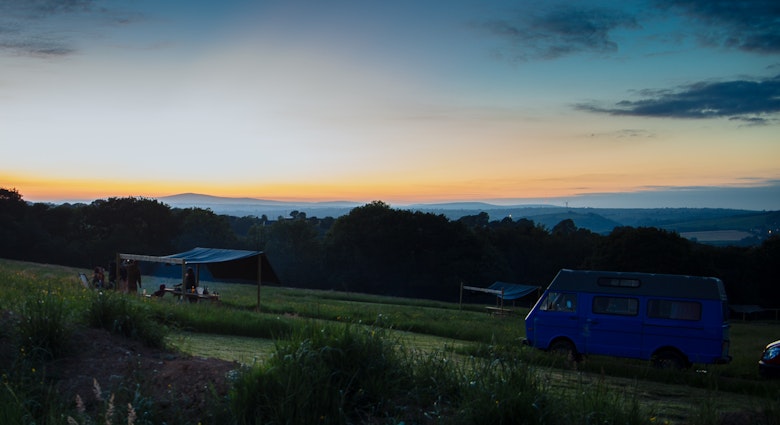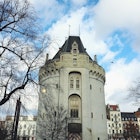The scenic walking paths of Belgium take you along dune-covered northern coastlines, up to misty heathlands in the east and through dense forests of the Ardennes. No matter where you roam in this nature-loving country, you won’t lack for options, whether planning a short family-friendly hike near Brussels or plotting a multi-day cross-country trek.
The wilderness is easily accessible in this relatively small country, and you can experience many facets of Belgium while exploring its extensive and well-marked trail network. On a short trip you can walk through landscapes of seaside, forests, valleys and rivers, and enjoy a dose of Belgian culture along the way.

Promenade des Échelles
Best walk for adventure
5.1km (3.2 miles) round trip, 2-3 hours, difficult
The so-called ‘Ladders Walk’ stretches for only 5km, but it takes you across challenging terrain and up to impressive viewpoints en route. Many Belgians rate it as one of the best walks in the Semois Valley, and it’s a great choice if you’re seeking a bit more adventure on the day’s outing.
True to name, the path involves several sheer ascents and descents made by ladder, so it’s not recommended for small children. The ladders date back to the 1930s, when the local government, fearing war on the horizon, installed them as a route to reach a hidden rock shelter. They were later incorporated into Belgium’s extensive trail system.
Starting in the village of Rochehaut (near the Église Saint-Firmin), you’ll soon leave the cobblestone streets behind as you make your way past farm fields and stables. After entering the dense forests east of town, the challenge begins as you go up and down the leafy slopes. You’ll descend to the Semois River – a great spot for a picnic lunch – then ascend again past mossy boulders and up to a stunning lookout over the Semois Valley. From here, the rolling hills are covered in greenery, and civilization seems like a distant memory.
The walk is set in the forested hills of the Ardennes region in Belgium’s Luxembourg province (not to be confused with the country of Luxembourg further east). Public transport is quite limited in the area, so it helps to have your own wheels.
Grande Randonnée 56
Best long-distance walk
168km (104 miles), 5-7 days, moderate
Serious trekkers set their sights on completing one of Belgium’s Grandes Randonnées or Grote Routepaden (abbreviated to GR), which are long-distance trails that take anywhere from a few days to several weeks to complete. Among the oldest and most famous is the GR 56, a path that courses for more than 160km through Wallonia’s Cantons de l’Est (Eastern Townships) not far from the German border.
The GR 56 has many highlights, including a traverse of the hautes fagnes (high fens), a misty landscape of upland heath and bogs that are often cloaked in mist. You’ll also reach Belgium’s highest point, the 694m Signal de Botrange, and cross through forests, fields and meadows, which are full of vivid blooms during the spring. At times, the trail follows wandering streams like the upper course of the Amblève as it curves through lush valleys. The trail also has deep connections to Belgium’s cultural heritage, as you pass through villages dating back to the Middle Ages.
You can camp at designated spots along the way or overnight in peaceful settlements like Saint-Vith, Malmedy and Stavelot. The GR 56 also leaves plenty of room for improvisation, with over 80km of detours including a route that leads to the historic town of Monschau in Germany.

Royal Walk
Best walk for families
7.3km (4.5 miles), 2 hours, easy
One of the best walks near Brussels lies within the Fôret de Soignes (Sonian Forest). In less than an hour, you can be out of the bustling streets of the capital and strolling beneath towering beech trees that create an enchanting shadow-filled world beneath the leafy canopy.
While there are many walks you can make in this 4400-hectare woodland, the Tervuren Arboretum makes an excellent gateway. This park contains trees and shrubs from major geographical regions around the world, all grouped into distinct sections. Over 700 different species flourish here, from the boreal forests of northern Canada to the Japanese cedars of Hokkaido. The so-called Royal Walk takes you through some of the most impressive woodlands, leading through coniferous and deciduous forests, over gentle slopes and out into open grasslands.
As you set out, you’ll see araucarias (monkey puzzle trees) from Chile and giant sequoias from California – including several specimens that reach more than 100m high. In other parts, you’ll see mixed oak forests, grassy valleys and tiny ponds ideal for a bit of contemplative nature gazing. The journey ends back in the new world, amid the fragrant Douglas firs and spruces of the Rocky Mountains.
The Royal Walk is an ideal destination for families, with sun-drenched meadows for running about and beautiful spots for a break (don’t forget the picnic). If you’re still eager to explore the forested paths after completing the Royal Walk, you can make several other circuits or simply pick an area of the arboretum you’re interested in and go exploring.
It adds a bit more exercise to the itinerary, but you can reach the Tervuren Arboretum by public transport from Brussels by taking the metro to Montgomery station (line 1) and taking tram line 44 to Vier Armen. From there it’s another 2km along forested trails into the arboretum. Admission is always free.

Westhoek Walk
Best coastal walk
10.4km (6.5 miles), 2-3 hours, moderate
On the Flemish coast, you can listen to waves lapping against the shore while strolling amid dunes and grasslands of the Nature Reserve de Westhoek. One of Flanders’ oldest nature reserves protects much more than just sand and sea. Some 11 different dune habitats are here, and archeological excavations have unearthed objects dating back to the Iron Age.
The walk begins in the Calmeynbos, an elm forest that’s rich in lichens, mosses and fungi, and attracts forest birds like woodpeckers and the golden oriole. From there you’ll continue to the dunes, which are also rich in life. The sandy biotope supports over 400 species of vascular plants, some 20% of which are quite rare. Avian and mammalian species are also present, from polecats and great crested newts to Eurasian sparrowhawks and short-eared owls. Keep an ear out for songbirds like willow warblers and nightingales.
The terrain has a few ups and downs, but is fairly level overall. Treading through loose sand, however, can make for an exhausting outing, so allow yourself ample time to complete the walk. Before hitting the trail, you can learn about the unique coastal ecology at the nearby Duinpanne visitors center. This is also a good spot for kids (though maybe go after the walk since there are many diversions) with hands-on exhibitions, a gift shop and a playground.
A terrace bar serves snacks and drinks, including a decent array of beers – a subtle reminder that you’re still in Belgium. Try the Duneuleute, a specially brewed amber made with sea buckthorn berries. You can reach the reserve by taking the Kusttram tram line along the coast from Ostend, Nieuwpoort or Koksijde and disembarking at De Panne Kerk. From there, it’s about a 10-minute walk to the visitor center and trailhead.

Promenade 1815
Best walk for history
14.4km (8.9 miles), 3-4 hours, easy
As ABBA so buoyantly proclaimed back in 1974 “At Waterloo, Napoleon did surrender.” If that’s the extent of your knowledge about the tumultuous events of 1815, then this walk is for you. Peer back in time to a watershed moment in European history on a memorable walk just outside the famous town in Walloon Brabant.
The Promenade 1815 takes you to locations featured in the Battle of Waterloo, visiting farms, fields and monuments that tell the story of Napoleon’s great defeat at the hands of the Duke of Wellington. The walk starts at the easy-to-spot Butte du Lion, a 40m mound of earth that offers a fine vantage point over the battlefield.
Afterward, you’ll wind your way through open farms and woodlands, passing 16 other stops along the way, like the Monument aux Belges, which pays homage to the 1200 Belgians who died fighting on both sides during the battle. At the Ferme du Caillou, you can see where Napoleon spent his final night before the battle. The well-preserved building and grounds house the country’s largest Napoleonic museum. At the Hougoumont, some of the bloodiest fighting took place on the grounds surrounding this small manor – as many as 6000 soldiers were killed or wounded.
You can reach the battlefield by taking TEC bus W from Brussels Midi station to the Braine-l'Alleud Route de Nivelles stop, which is a short walk to the Hameau du Lion. Note that it’s free to walk the battlefield and visit the exterior of different sites, but if you want to peer inside – or climb up the 226 steps of the Butte du Lion, you'll have to pay admission. Various passes are available like the Pass 1815, which gives access to several sites.
You might also like:
A stroll in Marolles: what to do in Brussels' hippest area
New Zealand mulls a four-day work week to boost domestic tourism
10 of the world's most amazing train journeys












